13.02.2025
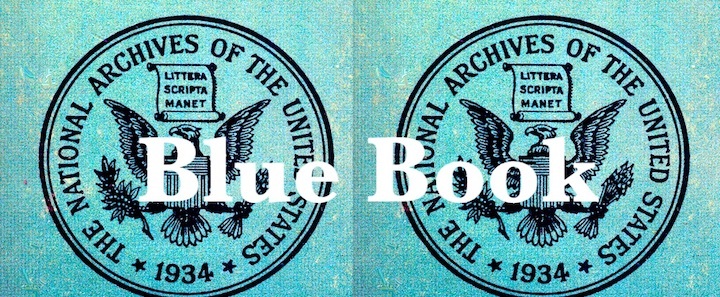
Project Blue Book case review: July 1952
This is the latest edition of the Project Blue Book case review covering the month of July 1952. Like the previous evaluations, I tried to examine each case to see if the conclusion had merit. I added comments to help clarify the explanation or if I felt it was not correct or adequate. Items marked with red highlighting had photographs in the case file.
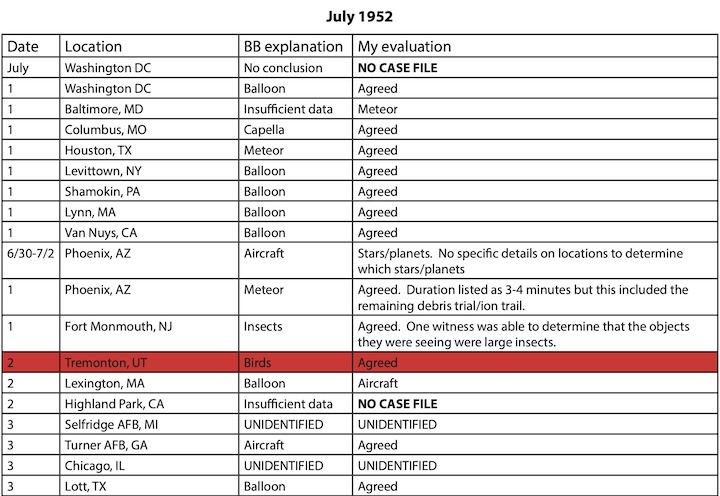
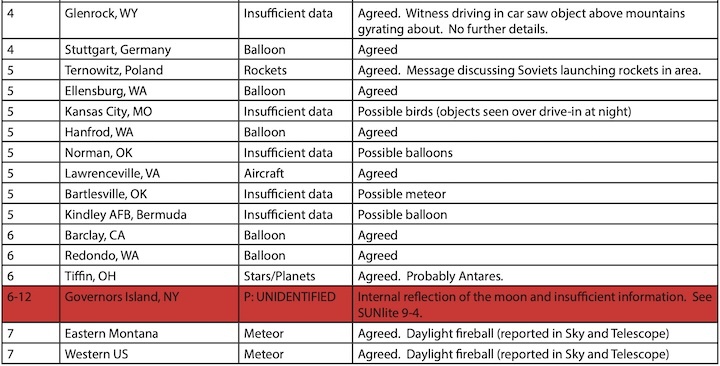
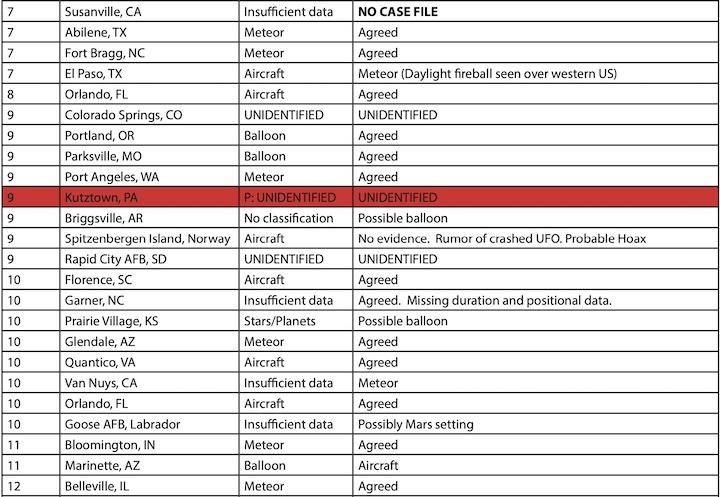
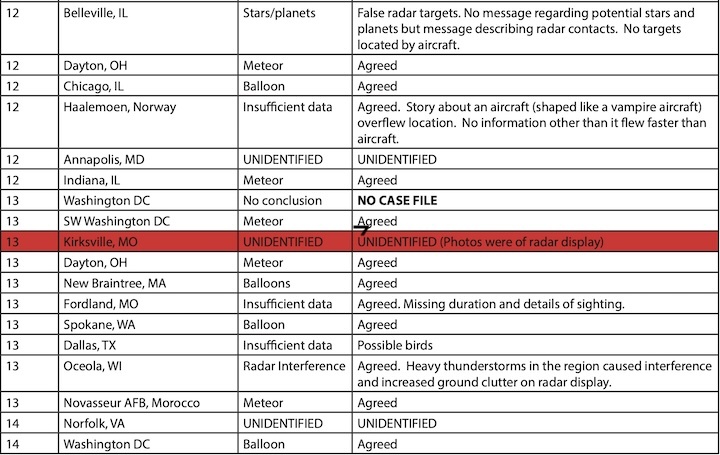
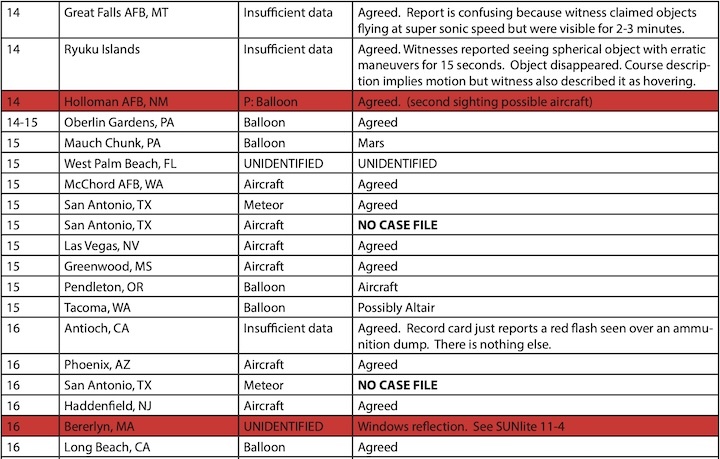
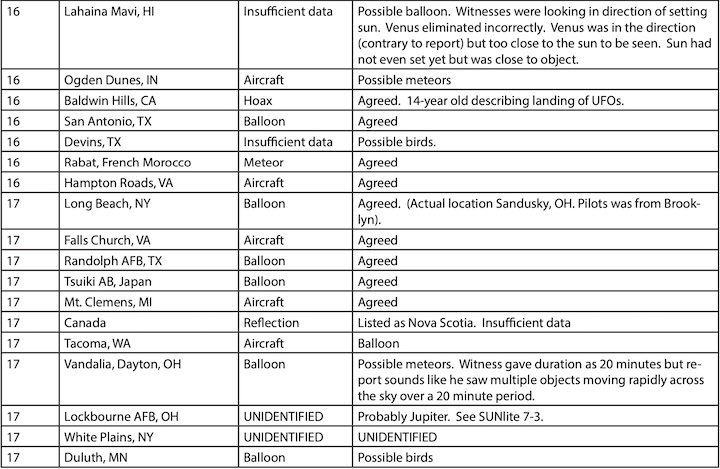
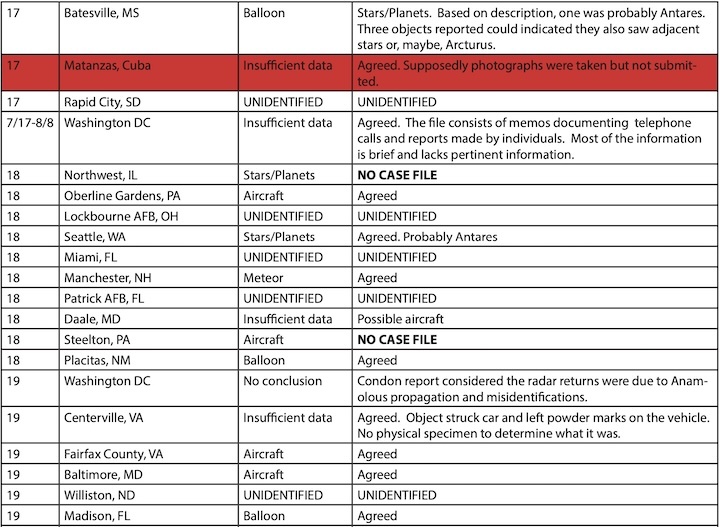
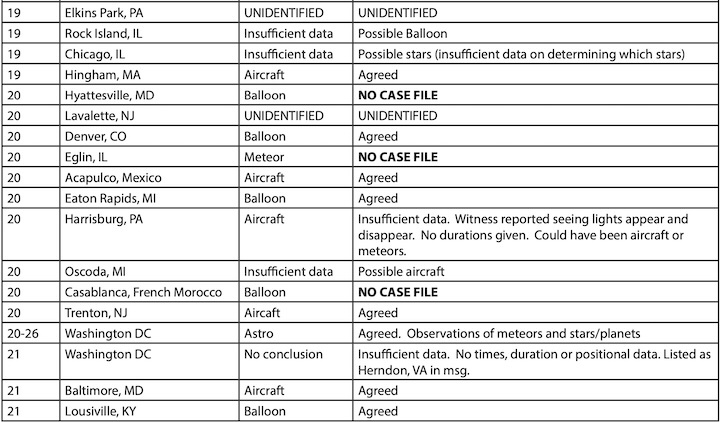
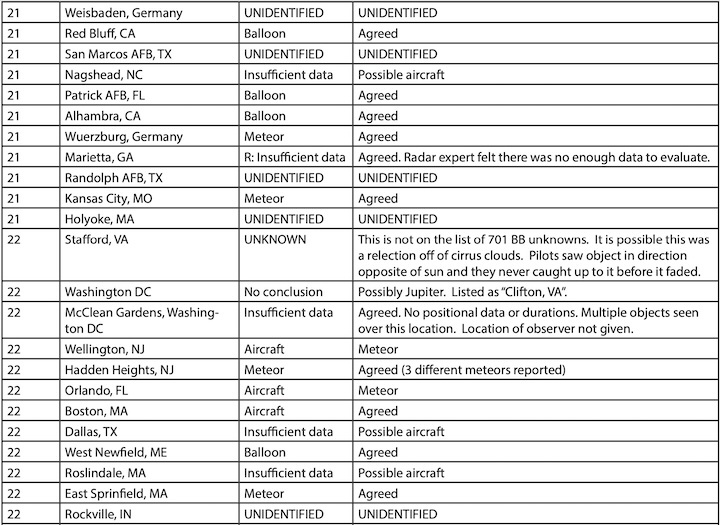
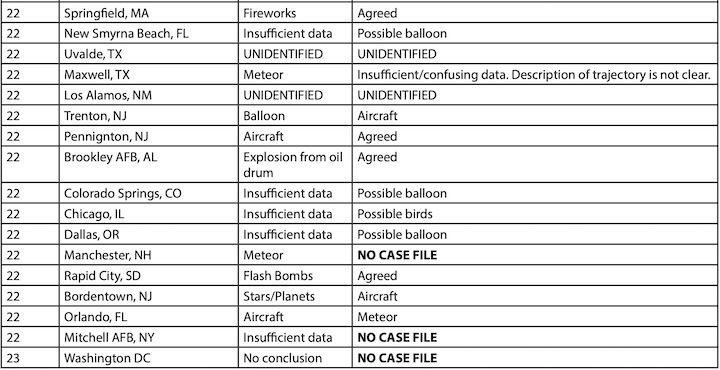
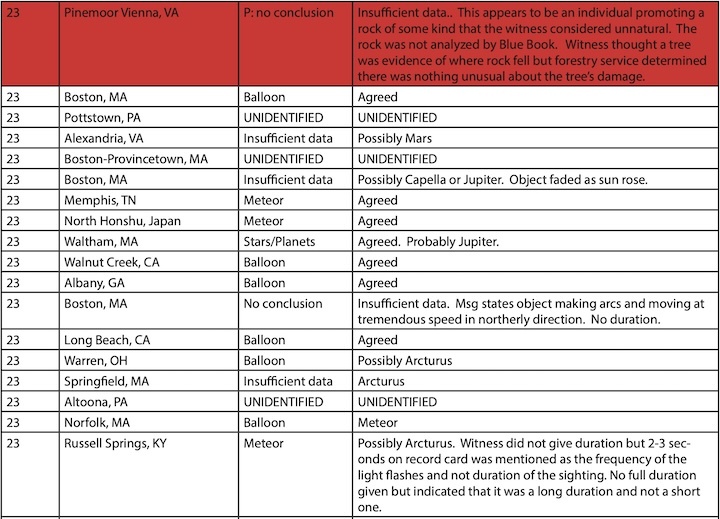
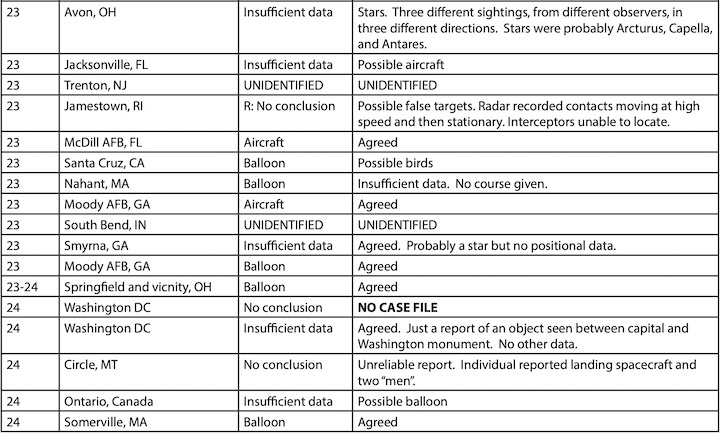
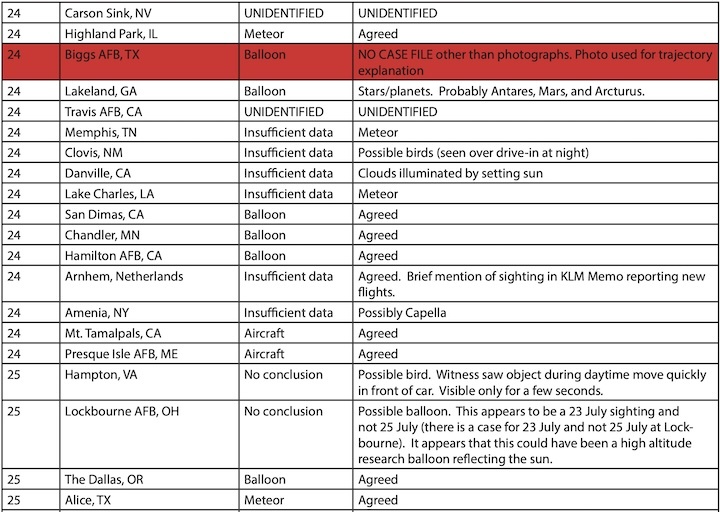
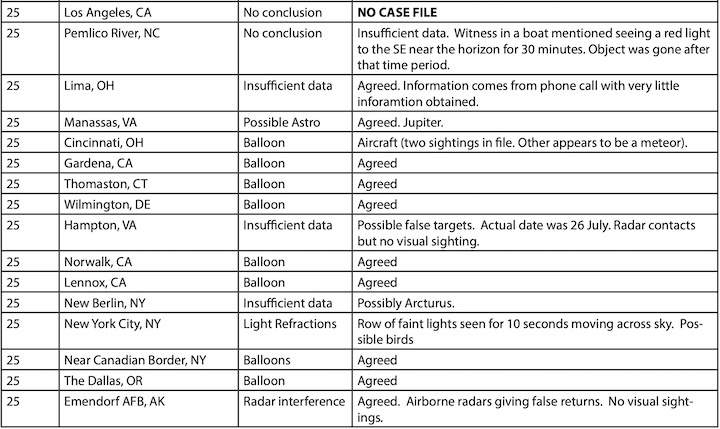
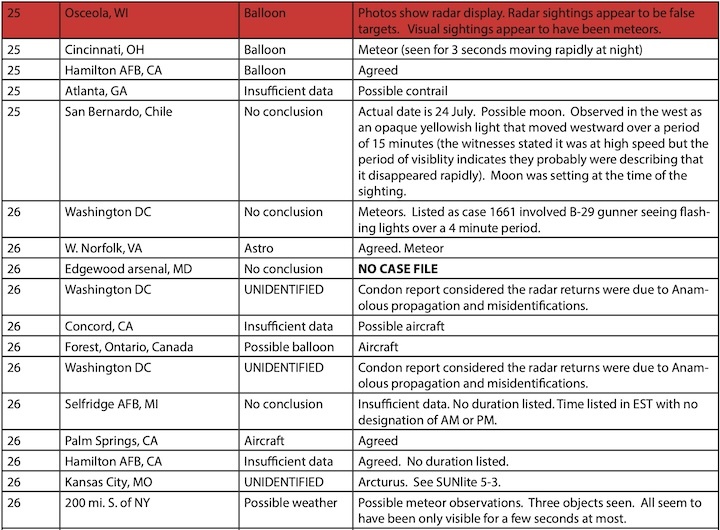
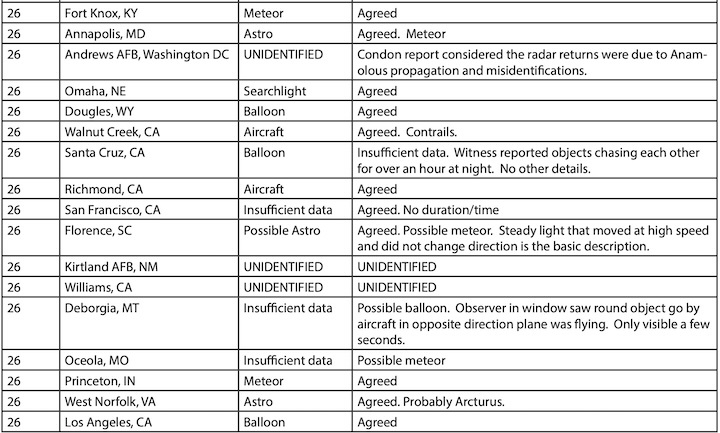
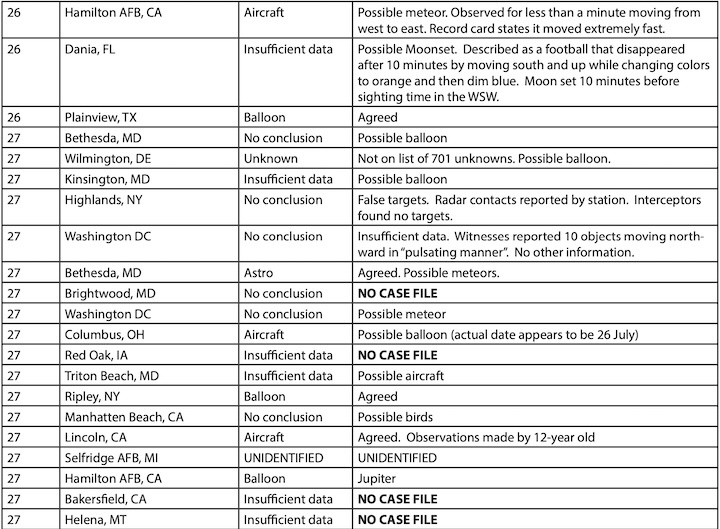
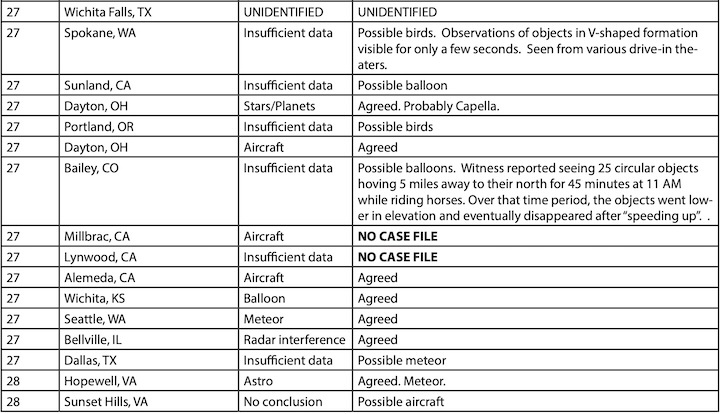
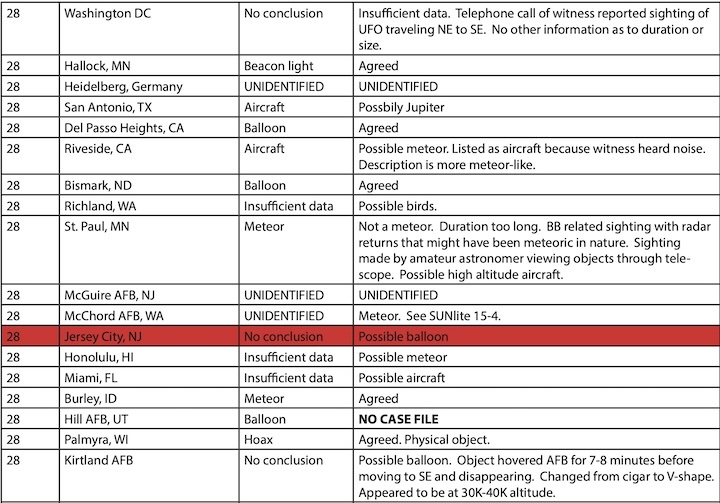
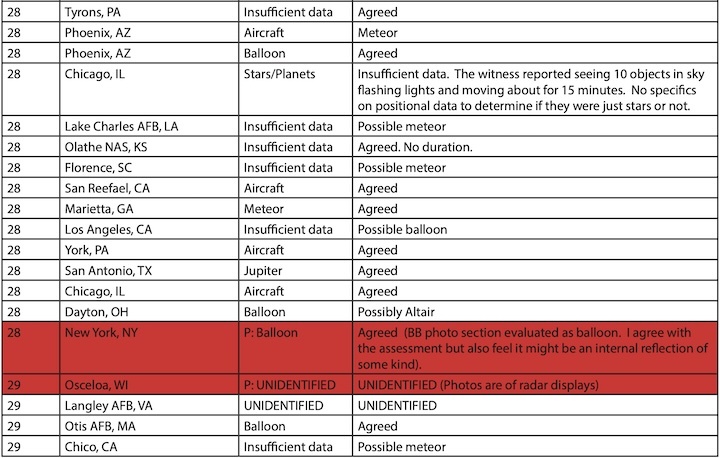
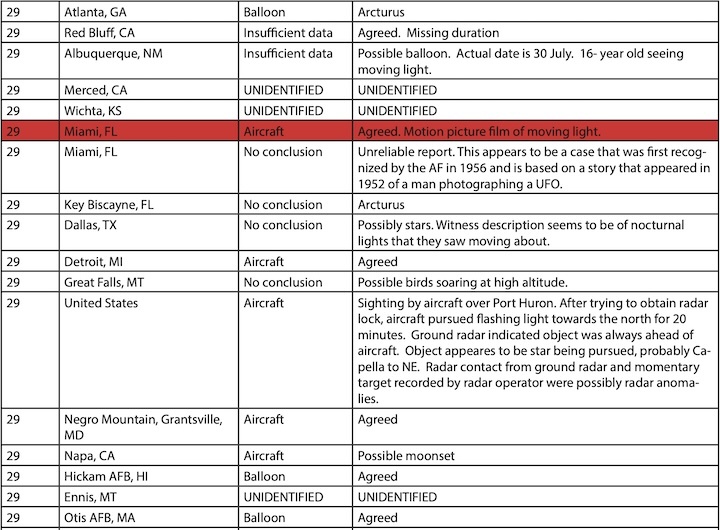
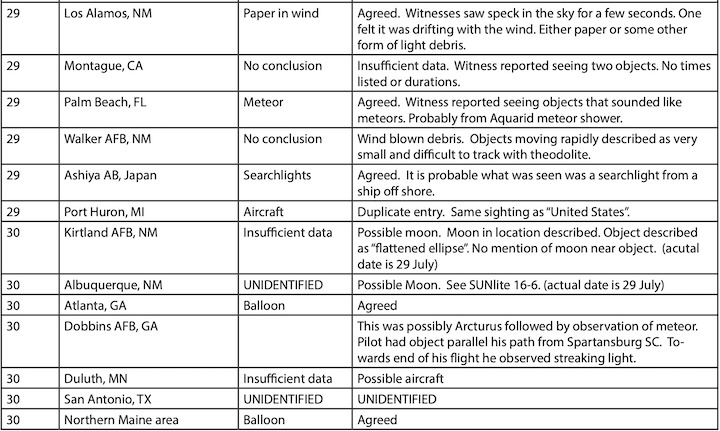
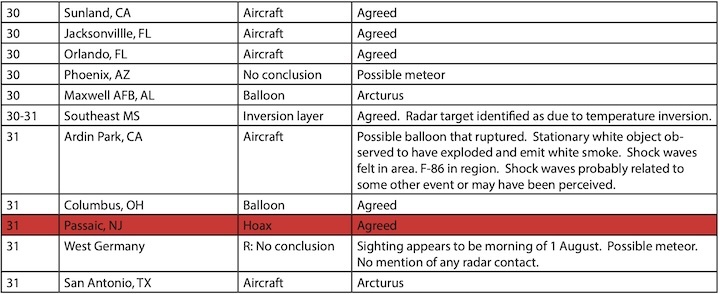
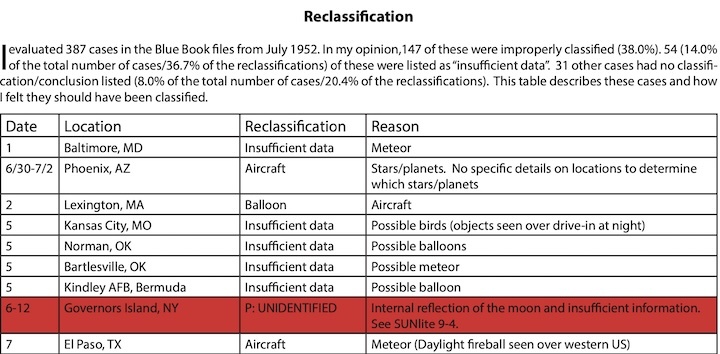
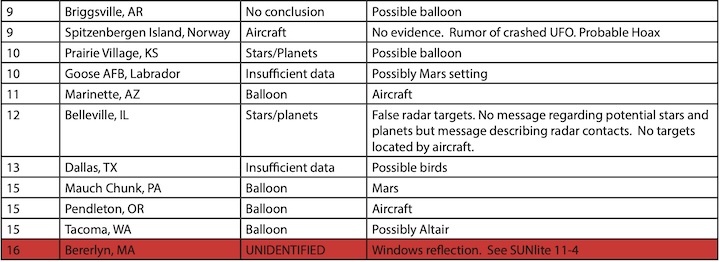
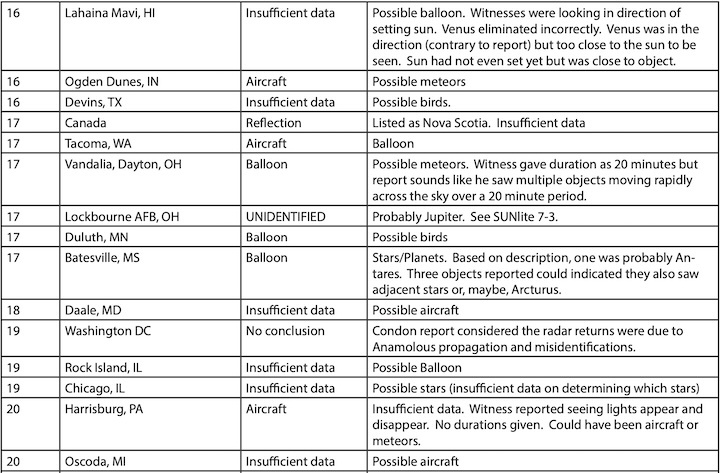
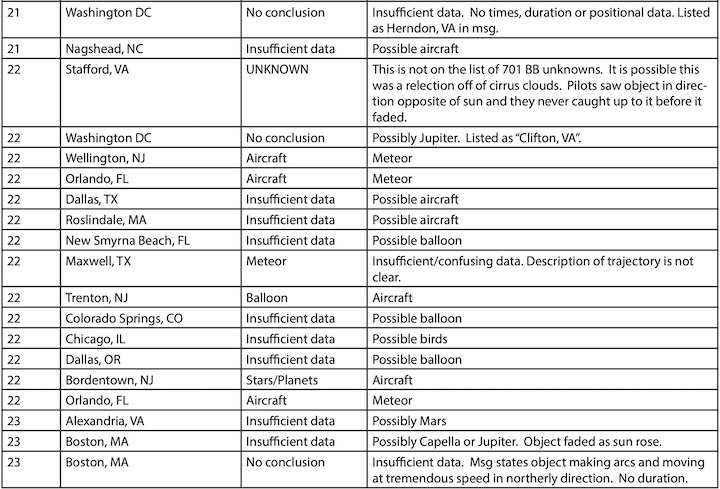
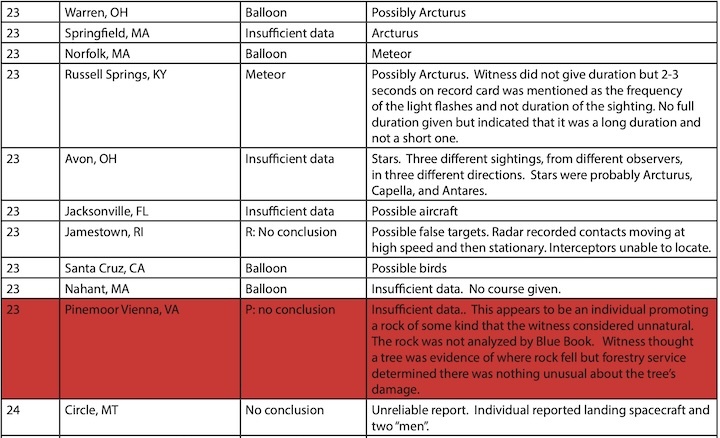
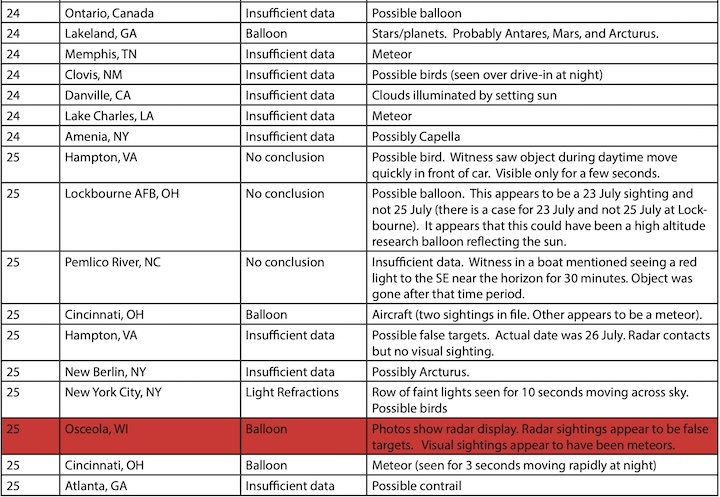
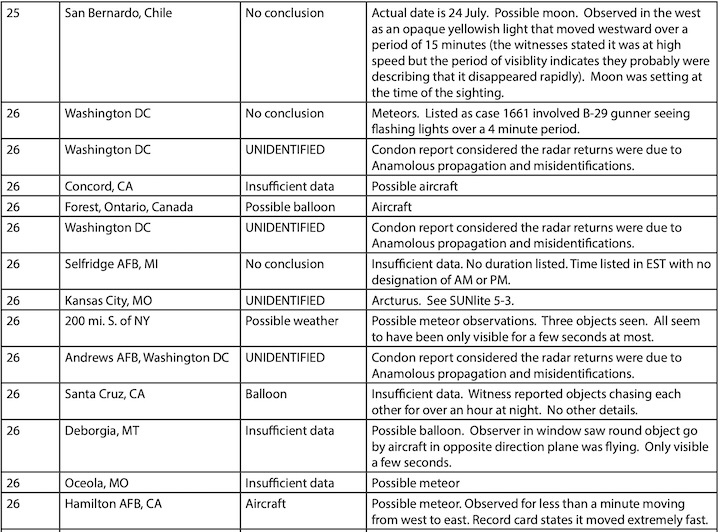
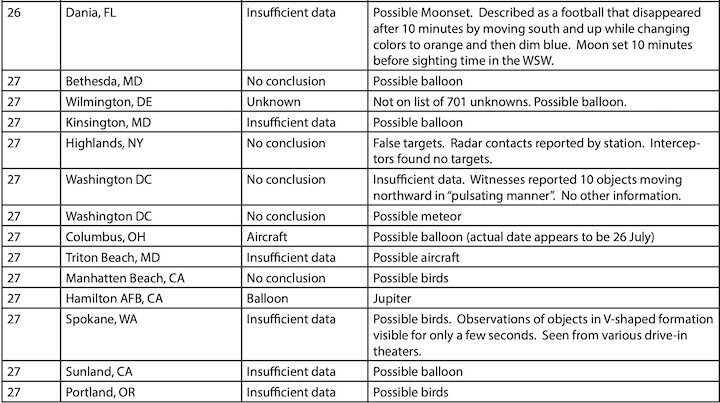
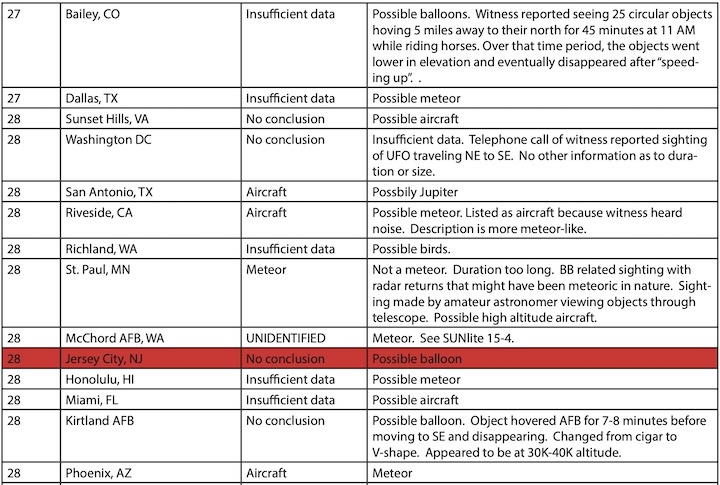
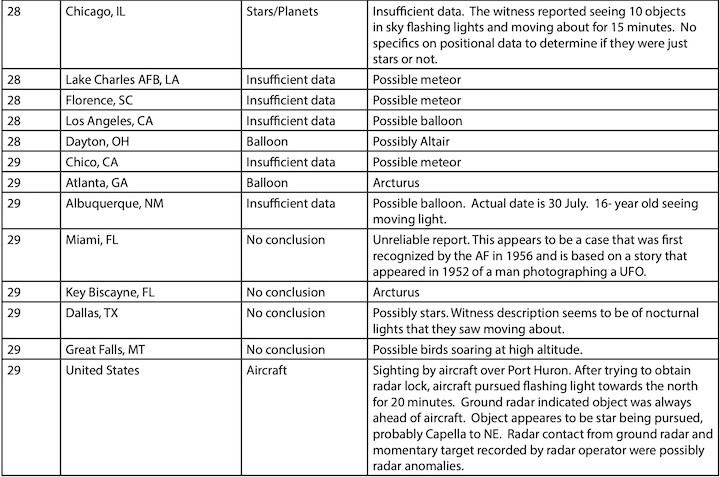
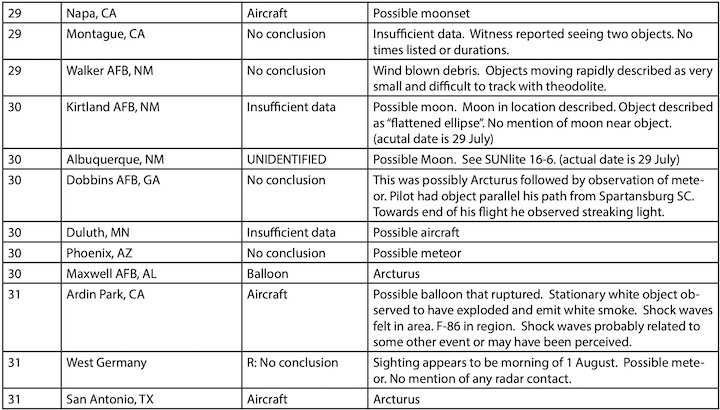
Summary
The reports in this time period were extremely challenging due to the shear weight of numbers. It is obvious that Blue Book had their hands full. There were many cases that they did not even bother to examine/classify. To top it off, the files are a mess.
Various cases are sandwiched into other case files making it difficult to locate each individual case. I was surprised I found most of them. I could not find 25 out of the over 412 cases in the files (6%). Either the cards were missing or they are too hard to locate.
I noticed that some of the dates were incorrect in the files. This is probably due to somebody making a clerical error when dating the master list. An example is the Lockbourne case of 25 July. I could not find any 25 July sighting. However, I did find one for 23 July and there is no 23 July sighting on the master list. I assume that this is the one referenced by Blue Book.
I found it interesting that there were quite a few that had no classifications assigned to them. There were thirty (7.2% of all the sightings for July 1952) of those examined that had this classification. I am guessing they just did not have the time to look at these cases. I recall reading that Hynek complained about Blue Book going back and reclassifying old cases. I don’t understand why they never tried to look at these. Many were low hanging fruit and could have been identified or listed as insufficient data.
Normally, I leave all UNIDENTIFIEDs in the list of 701 unknowns as UNIDENTIFIED unless I have examined them in my 701 club column. The files included several “unknowns” in the July 1952 that were not on the 701 list. Because of this, I took the time to examine them and classify them on the spot, without writing a column on it. The comments will explain the classifications I gave.
Additionally, I decided to default to the Condon study’s explanation for the two Washington DC National sightings on 26-27 July as temperature inversions and misinterpretation of man-made/natural objects. The Condon study spent a lot of time on this and their expertise is enough for me to accept their explanations. I realize that UFO experts disagree but I found Gordon Thayer’s writings persuasive enough. In his conclusion, Thayer had stated:
In summary, the following statements appear to be correct:
1. The atmospheric conditions during the period 19-20 and 25-27 July, 1952, in the Washington, D. C., area, were conducive to anomalous propagation of radar signals;
2. The unidentified radar returns obtained during these incidents were most likely the result of anomalous propagation (AP);
3. The visual objects were, with one or two possible exceptions, identifiable as most probably meteors and scintillating stars.
I have looked at most of the visual sightings mentioned in the case file and agree that most sound like the standard nocturnal light UFOs and nothing to get excited about. The temperature inversion explanation was documented by Thayer and was also analyzed in 1952. The Bordon-Vickers report from 1953 also seemed to confirm these conclusions. In my opinion, these two cases have been explained enough to remove them from 701 club.
I do get some feedback from readers about some of my classifications. I want everyone to understand that these are MY reclassifications and, while I appreciate the feedback and enjoy the discussions, I also like to point out that they are MY interpretation of how I think they should be classified based on the available data. I usually list my justifications in the comments. The bottom line is when all is said and done, I agree to disagree with those who feel that I did not properly classify a specific case as they would like.
Perhaps, if they had spent the dozens of hours reviewing each and every case, they might appreciate the frustration I feel with the information in the files. There always seems to be a lot of information that is open to interpretation or there is not enough information. This makes any conclusion open to interpretation by the person looking at the data.
I intend to perform a review of August - September1952 next issue and finish the remainder of 1952 in SUNlite 17-2. That will complete my Blue Book review column. As I previously noted, this will basically end SUNlite’s regular distribution.
The final issue will cover a review of the Blue Book data I collected. There will also be a supplement with all the data. The end result should be an interesting collection for readers to examine.
Quelle: SUNlite 6/2024
